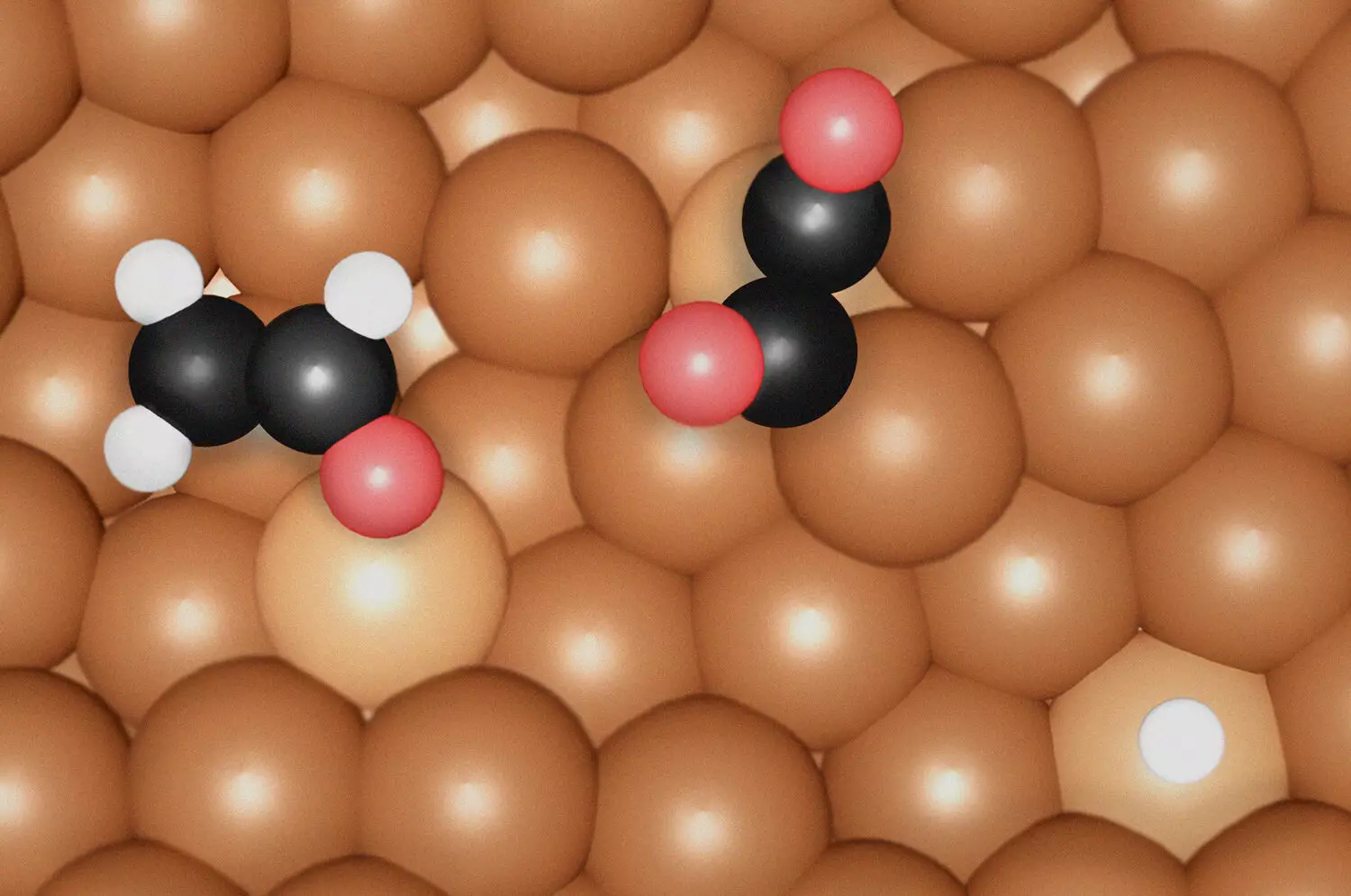In the quest for sustainability, the conversion of carbon dioxide (CO2) into usable chemicals represents a monumental leap forward. A recent investigative study emphasizes this potential by harnessing sophisticated spectroscopic techniques coupled with theoretical analysis to illuminate the dynamics of CO2 transformation into valuable materials like ethylene and ethanol. Published in the esteemed journal, Nature Energy, this groundbreaking research underlines the efficacy of electrochemical reduction (CO2RR), a method that integrates renewable energy to facilitate the conversion of CO2 into high-value products. This research not only catalyzes advancements in sustainable practices but also addresses critical environmental challenges.
Ethylene and ethanol are crucial target chemicals, playing key roles in the production of green plastics and cleaner fuels, respectively. Despite their significance, the pathways and transitional stages leading from CO2 to these end-products have remained inadequately understood. A robust mechanistic comprehension is essential for optimizing catalyst design, leading to more efficient processes that can significantly diminish carbon emissions and enhance energy efficiency. By better understanding how active sites evolve during the interaction of reactants and intermediates, researchers can further refine catalytic activities and enhance productivity.
The study led by a prestigious research team, including Dr. Arno Bergmann, Prof. Dr. Beatriz Roldán Cuenya, and Prof. Dr. Núria López, employed cutting-edge techniques such as in-situ surface-enhanced Raman spectroscopy (SERS) combined with density functional theory (DFT). These methodologies provided penetrating insights into the molecular interactions occurring on copper (Cu) electrocatalysts, effectively modifying our understanding of the overall reaction mechanism.
One of the pivotal findings of this study reveals that the synthesis of ethylene is facilitated through the formation of certain molecular intermediates termed *OC-CO(H) dimers, which arise on the Cu sites that possess varied coordination. In stark contrast, the generation of ethanol is shown to depend on an intricate interplay of structural components, requiring highly compressed and distorted local environments characterized by the crucial intermediate *OCHCH2.
The Role of Catalyst Morphology
A significant highlighted discovery in this research revolves around the impact of surface morphology on reaction efficacy. The undercoordinated Cu sites exhibited their ability to effectively bind CO, which is a decisive step in the electrochemical reduction process. Interestingly, these atomic-level irregularities in the Cu sites are not merely artefacts; they emerge and evolve under specific reaction conditions, thereby enhancing the catalytic performance vital for both ethylene and ethanol production.
The implications of these findings resonate deeply within the chemical industry, indicating a pathway towards the establishment of sustainable catalytic systems capable of lowering the carbon footprint linked to chemical manufacturing. By distilling the necessary conditions and intermediates for selectively producing ethylene and ethanol, enhanced catalysts may emerge that harness CO2 utilization more effectively.
This particular research exemplifies a synergistic collaboration, integrating theoretical frameworks from a Spanish research group with hands-on experimental observations. Such partnerships enable a more holistic examination of complex problems within CO2 reduction. The interface science department involved serves as a nexus for multidisciplinary efforts from both the Fritz Haber Institute and the Institute of Chemical Research of Catalonia, marking a significant stride in the field of CO2 utilization.
The longitudinal implications of this research extend beyond theoretical advancement; they usher in tangible strategies for mitigating CO2 emissions and engender sustainable chemical production methodologies. With a clearer grasp of the key intermediates and active sites that facilitate the conversion processes, the door opens for researchers to innovate more effective catalytic solutions tailored for a sustainable future.
Unlocking the mechanisms involved in the electrochemical reduction of CO2 not only enhances our scientific understanding but also propels us towards practical solutions that harmonize industrial activity with ecological imperatives. The quest to transform CO2 into useful chemicals like ethylene and ethanol stands as a testament to the potential of advanced research methodologies and collaborative frameworks. As industries strive to incorporate greener practices, the findings from this study represent a pivotal step toward reducing reliance on fossil fuels and minimizing environmental impacts. The future of chemical synthesis lies in these innovative approaches that echo sustainability and pave the way for a cleaner planet.

